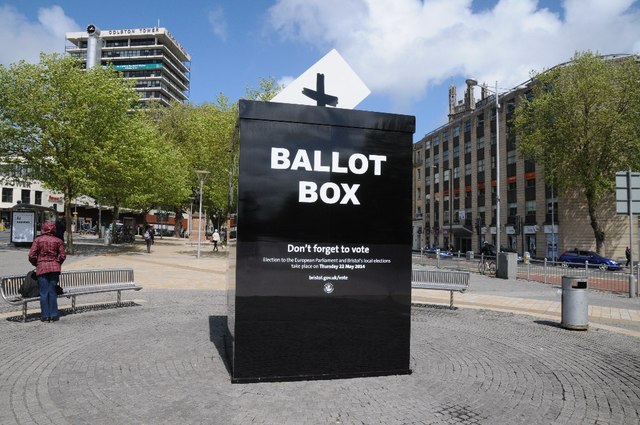The size of the electorate is up in most constituencies.

Council data shows that the majority of constituencies have larger electorates for this election than they did in 2017.
Data obtained by journalist Chaminda Jayanetti shows that the electorate increased in 355 constituencies and decreased in 103 of them. There are 646 constituencies in total. The size of the UK’s adult population tends to increase every year – so this is to be expected.
Many of the constituencies in which the electorate increased most are Labour safe seats in urban areas like London, Birmingham or Cardiff.
Reasons for this could be: more people moving to or not leaving the constituency, more of those living in the constituency getting registered to vote or less people in the constituency dying, perhaps as its population becomes younger.
With the exception of York, many of the places where the electorate is decreasing are rural, suburban or small towns like Erith and Thamesmead, Aldershot and Montgomeryshire.
Without further information, it’s hard to draw firm conculsions but an increase in the electorate is likely to generally be good for the Labour Party, Greens and (to a lesser extent) the Liberal Democrats – as it is likely to signal a younger electorate.
Here are 13 marginal seats where these changes could make a difference
1. Southampton Itchen
The Tories won this seat by just 31 votes in 2017 – so it is perhaps Labour’s easiest gain. They’ll be pleased that the electorate is up 7,284 on the last election.
There must be something in the water down there because Southampton’s other seat – safe Labour Southampton Test – had the biggest increase of any constituency – 9,310 voters.
2. Kensington
This one’s perhaps the Tories easiest gain as Labour won it by just 20 votes in 2017 and the Liberal Democrats surge in the seat looks likely to mean the Tories reclaim it.
Both Labour and the Lib Dems should be buoyed by the news there are over 4,000 more voters here than in 2017 – an electorate increase of 7%.
3. Portsmouth South
Labour won this seat by 1,500 votes last time around and looks likely to reclaim it again. They’ll probably be helped by the fact there are nearly 4,500 more voters than last time.
4. Wells
If the Lib Dems have a good night and Labour supporters vote tactically, the Somerset seat could go yellow. The Tories have a 7,000 majority here and there are 4,000 new voters. The Lib Dems had the seat between 2010 and 2015.
5. Derby North
Labour’s Chris Williamson won the seat by 2,000 votes in 2017. He’s been kicked out of the Labour Party and is running against them. Labour will be hoping he doesn’t split the vote enough to let the Tories in.
Labour should be helped by there being 3,000 more voters than there was in 2017. It’s the kind of seat the Tories will need to win to get a good majority.
6. Lancaster and Fleetwood
While the Labour MP Cat Smith has a decent 6,000 majority – the Tories won the seat in 2010 and only narrowly lost it in 2015. So it’s more marginal than it first appears.
It’s a studenty seat and it’s electorate has gone up by 3,000 since 2017.
7. Milton Keynes South and 8. Milton Keynes North
The two Milton Keynes seats are ones Labour could win on a very good night. Both have majorities of just under 2,000. The electorate is up by nearly 4,000 in Milton Keynes South and 2,300 in Milton Keynes North.
9. Newcastle under Lyme
Labour have been run very close in the Stattordshire seat in the last three elections. Paul Farrelly held it by just 30 votes in 2017. The electorate has gone up by 2,600 voters since then.
10. Cities of London and Westminster
The wealthy, Remainy central London seat is another one where that looks likely to elect a Tory MP – as the Remain vote splits between Labour and the Lib Dem candidate Chuka Umunna. The chances of that not happening are boosted by the 2,000 increase in the electorate.
11. Erith and Thamesmead
In this South London suburban seat, the electorate has decreased by more than anywhere else – by over 4,000 voters.
If this means its population is ageing then Labour could be under threat – despite a relatively comfortable 7,000 majority.
12. West Bromwich East and 13. West Bromwich West
In East, the electorate is down 1,700. In West, it’s down 1,300. This could be a particular problem for Labour in West Bromwich West where the Labour majority is under 4,500.
On top of this, the party has a controversial new candidate there – as Ibrahim Dogus replaces the high-profile former deputy leader Tom Watson.




One Response to “13 marginal seats where changes to size of the electorate could be crucial”
Ian B Wingrove
If you want to know if you are in a safe seat and can happily vote for what you believe in, type your constituency into the YouGov website. I know that polls are misleading but this is the one that got closest to the result last time. https://yougov.co.uk/uk-general-election-2019/